We expected pickpockets at the Zócalo, Mexico City’s historic core. The cathedral is there. The city’s central square is there. The National Palace is there. So, lots of tourists… and plenty of opportunity for a jug troupe or two. We guarded our pockets and figured to make a quick transit across the square. Our destination was the Palacio Nacional, where some Diego Rivera murals are on display.
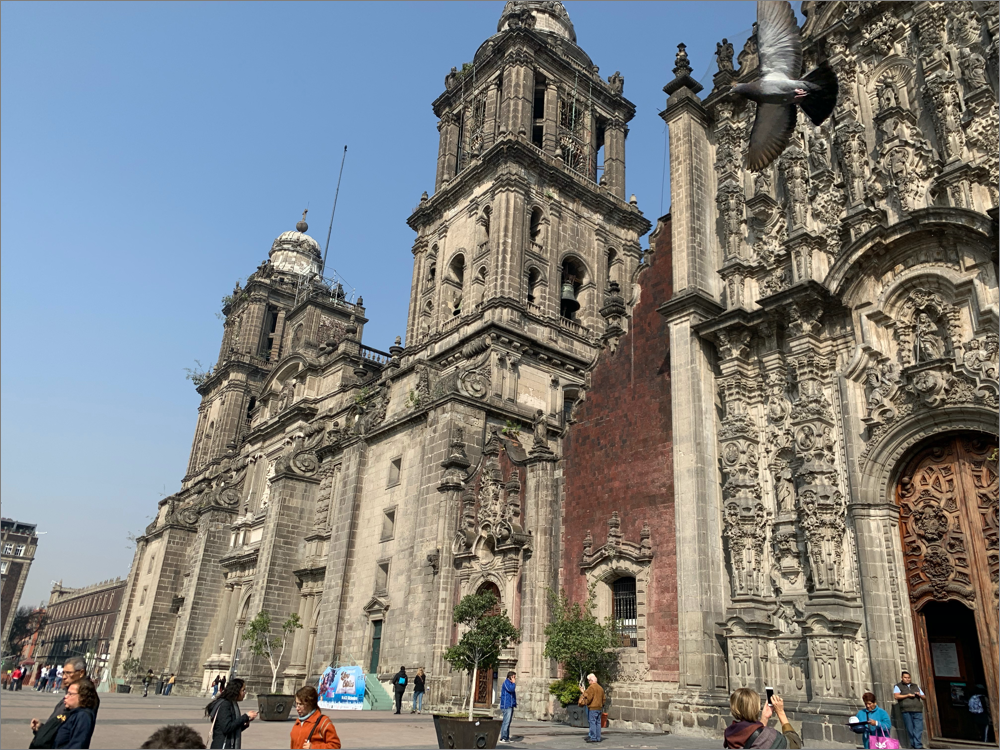
(copyright Leland E. Hale)
But first we had to meet the Pope. And Jesus. Because no way were we going to bypass a major cathedral complex. And this one is a precarious structure, built atop the sinking lakebed soils of Mexico City.
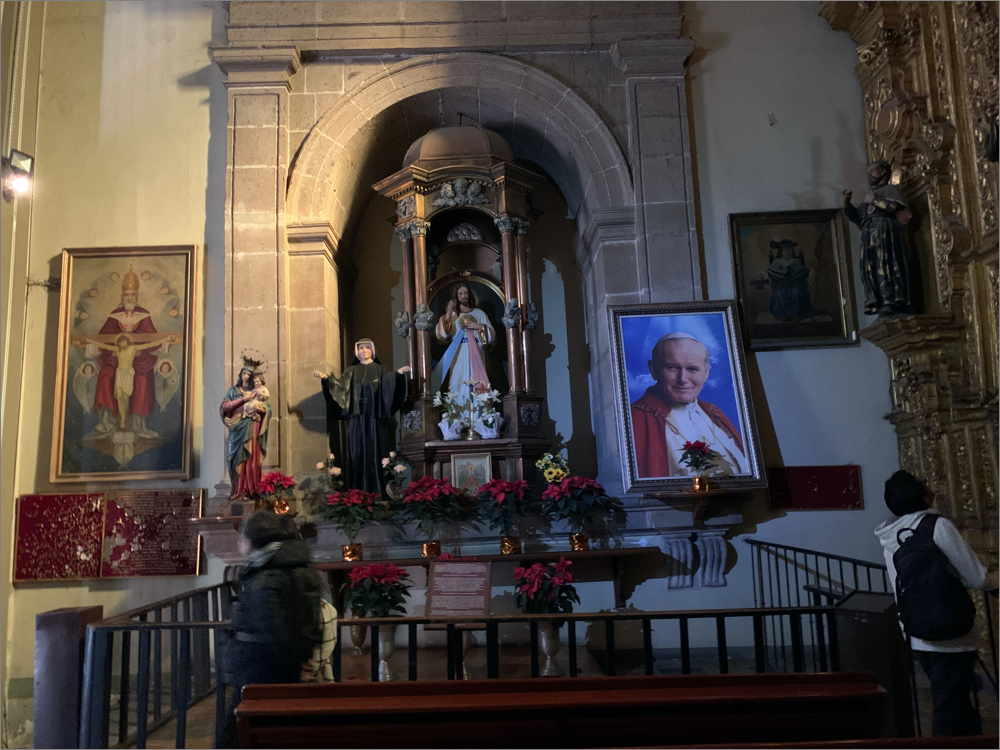
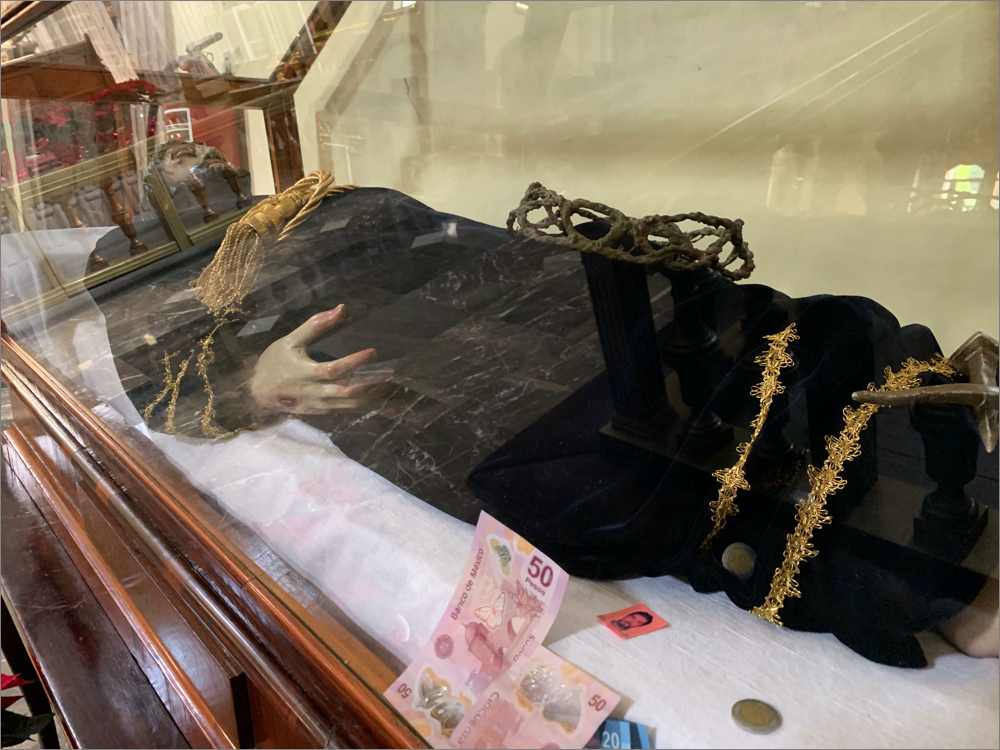
Back in the square and across from the National Palace, we came upon a friendly guy, dressed in a leather coat plastered with U.S. Navy patches. He addressed us in English. “Are you going to see Diego Rivera?”
“Yes.”
“Unfortunately, the Palace is closed today. The President is there. You can tell from the flag is flying.”
Behind us, two Asian women hesitated at the street corner. He turned to address them. “Are you going to the Palace? It is closed today.” [1]
He was, of course, a guide. He proudly displayed his official badge and, as he did so, disdainfully waved off the “amateur” guides that prowled the plaza. “They know nothing. But I, señor, am a certified anthropologist. And, if you like, I can give you a private tour of the Templo Mayor.” We hesitated while he fondled his credentials.
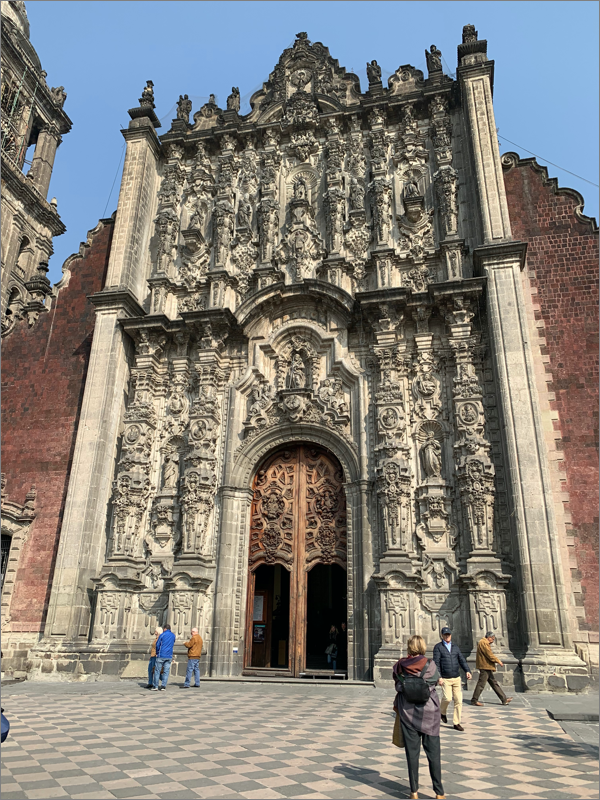
Centro Historico, CDMX (copyright Leland E. Hale)
“Do you know why the Tabernacle is made of bricks,” he asked as we headed for the Templo Mayor. He answered his own question. “Because that is where the peasants worshipped. But the cathedral — she is built of stone and sits on top of an ancient Aztec Temple.” [2]
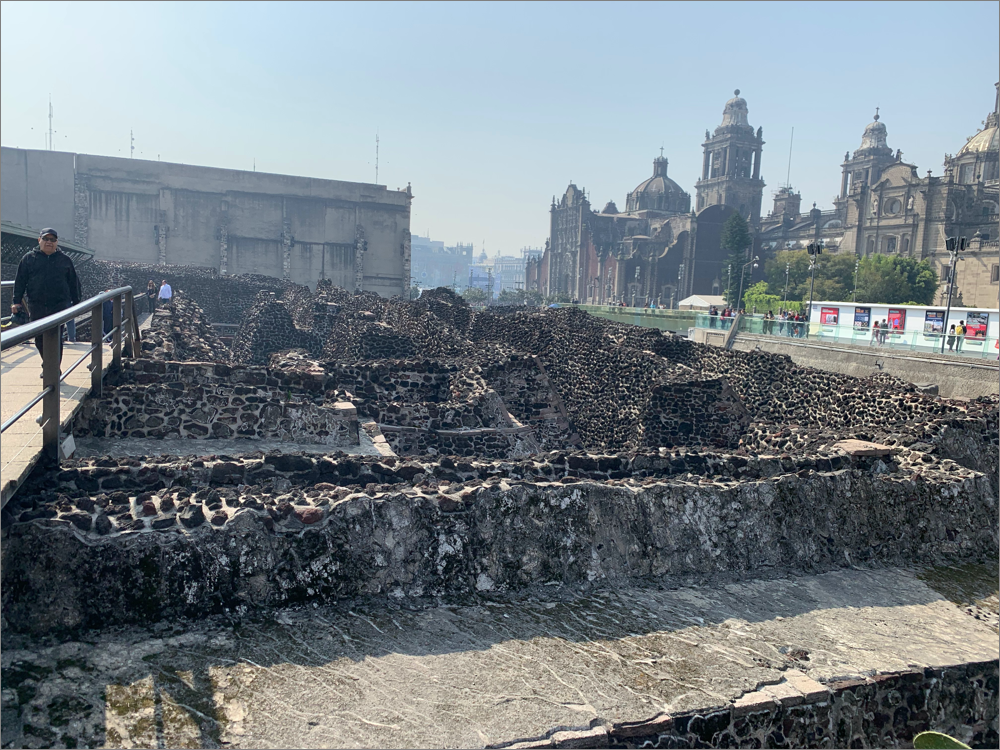
The discovery of the site — or more accurately its re-discovery — came in the late ’70’s. Some electrical workers were digging in the vicinity of an area known as the “island of the dogs,” a mound where street dogs congregated during periodic flooding. They happened upon a monolith of Coyolxauhqui, dated to the end of the 15th century. Weighing in at almost 10 tons, the find kicked off some serious anthropology.
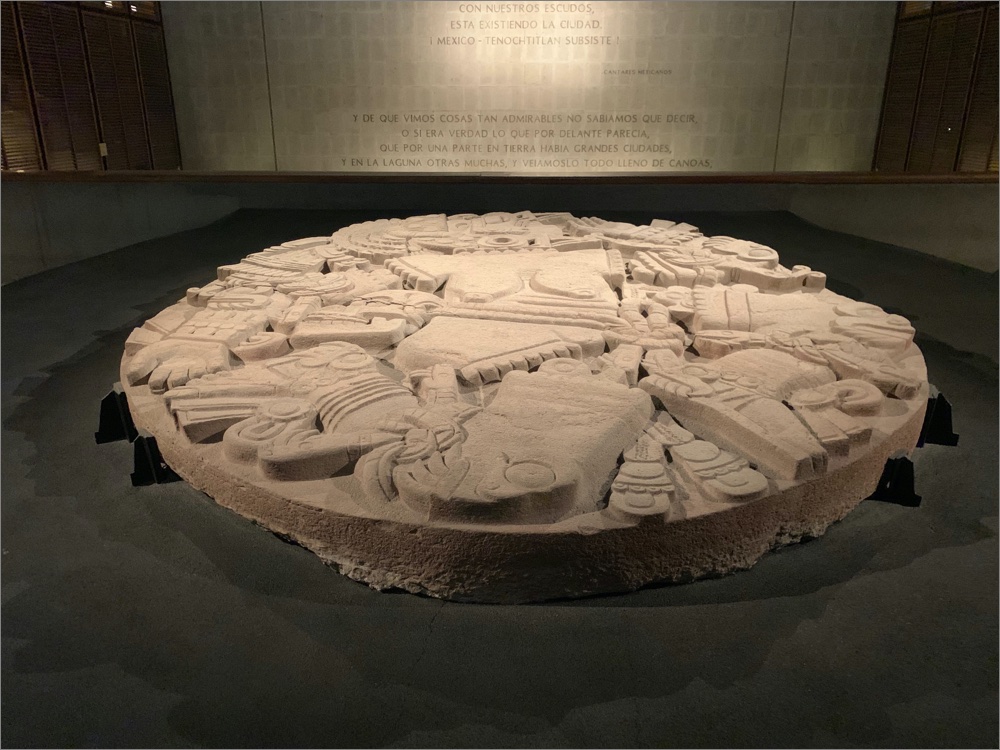
Workers ultimately uncovered a three-square block site. During the excavation, anthropologists found concentric rings, with several new temples built around and on top of their predecessor. Templo Mayor was like the layers of an onion, each slice going deeper in time.
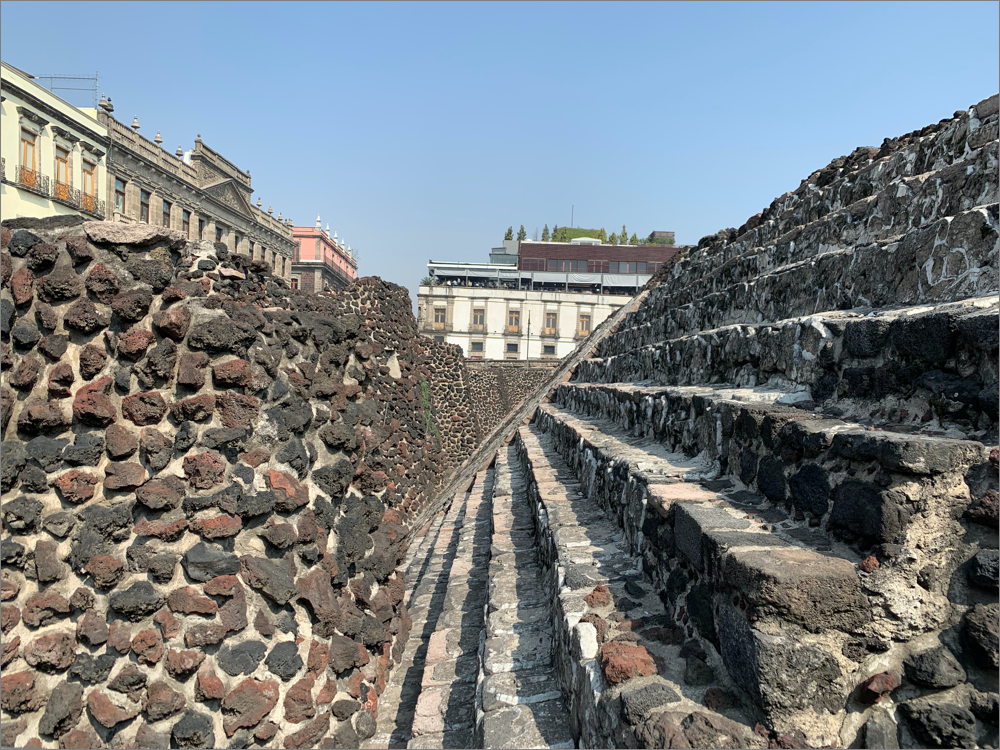
In our dream picture, this was the ultimate hidden palace. A place where truth, myth and imagination were inextricably entwined. As he sauntered out a side gate, our guide gave us his business card. We didn’t blink. He was perfect.
[1] The National Palace was open, despite what the guide claimed. Oh well. Our guided tour served as an appetizer for Teotihuacan.
[2] The guide’s story was half-true. Now a chapel, the Metropolitan Tabernacle once housed the archives and vestments of the archbishop. The cathedral indeed spans the remains of a major Aztec temple. This “reconquering” was a very common practice in the “New World.”